Pho (Vietnamese Noodle Soup): A Flavorful Journey Through Vietnamese Cuisine
Pho, Vietnamese noodle soup, is a cultural phenomenon rather than only food. Therefore, what precisely is Pho? With MOTOGO Tours, let’s investigate this meal in great depth.
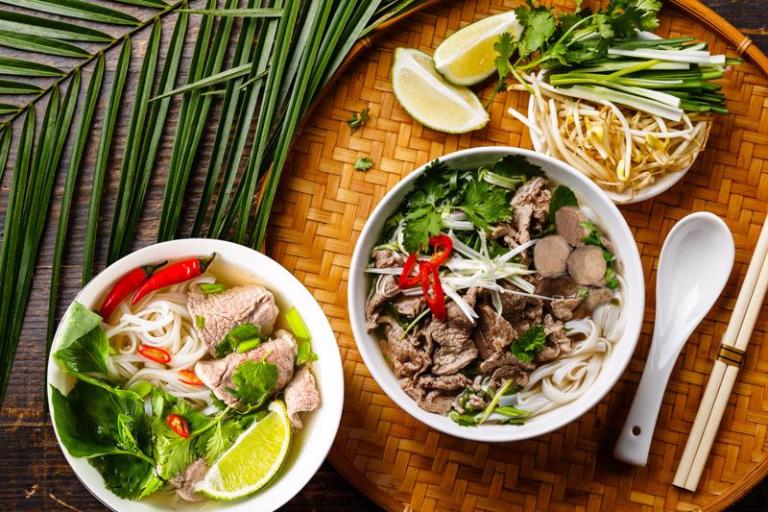
A Brief History of Pho
Pho’s narrative starts in northern Vietnam in early 20th century. Vietnamese nood soup is thought to have started from a mix of French and Vietnamese cooking customs. This dish developed into the meal we know today from the French beef stew mixed with native Vietnamese spices and herbs. Pot-au-feu is another example. It soon became a beloved staple throughout Vietnam and finally traveled around the world to enthrall foodies worldwide.

Ingredients That Make Pho Unique
Key Ingredients
Pho’s power resides in its component elements. Vietnamese Noodle Soup is mostly composed of broth, painstakingly made from cattle bones, onions, ginger, and a combination of spices including star anise, cinnamon, and cloves. The soul of the cuisine, this mix produces a deep, rich taste. Usually delicate and flat, the rice noodles are another vital ingredient that wonderfully absorbs the delicious broth.
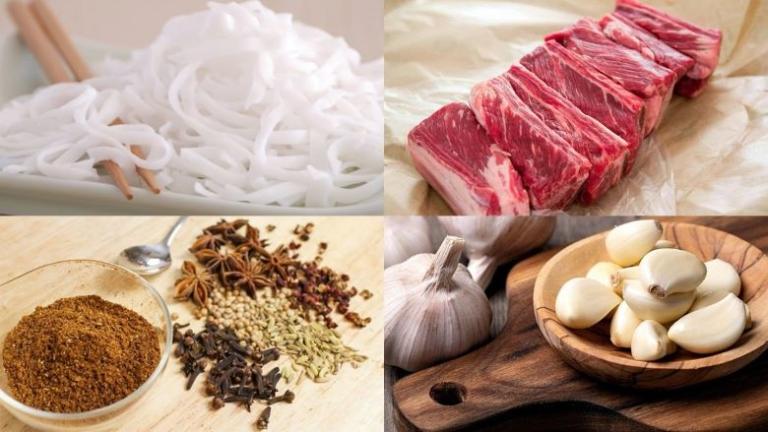
>>> Let’s see more: Bun Cha: Hanoi’s Grilled Pork with Vermicelli Noodles – A Must-Try Dish
The Role of Broth in Pho
Consider Pho soup as the basis of a magnificent structure. To complement the remainder of the meal, it must be robust and taste-ful. To release every bit of taste from the bones and spices, the broth is simmering for hours. This slow-cooking technique guarantees a clear and rich broth that balances the Pho exactly.
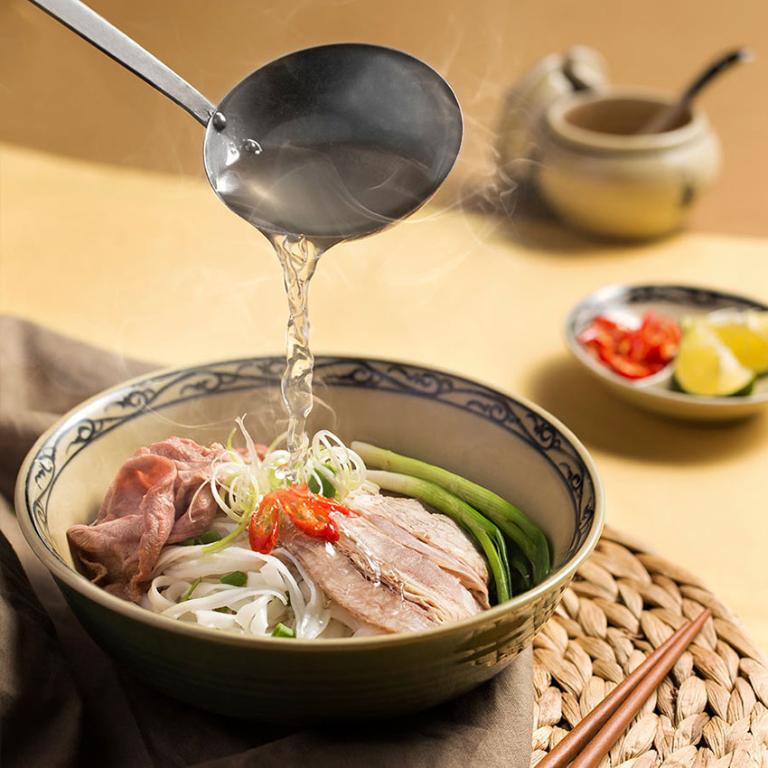
Noodles: Rice vs. Egg Noodles
Regarding Pho, the classic option is rice noodles. Their mild, chewy texture complements the broth really brilliantly. Conversely, although less common in Vietnamese Noodle Soup, egg noodles can be found in some variants. If you want to try, they can be a fun variation and offer a really different texture.
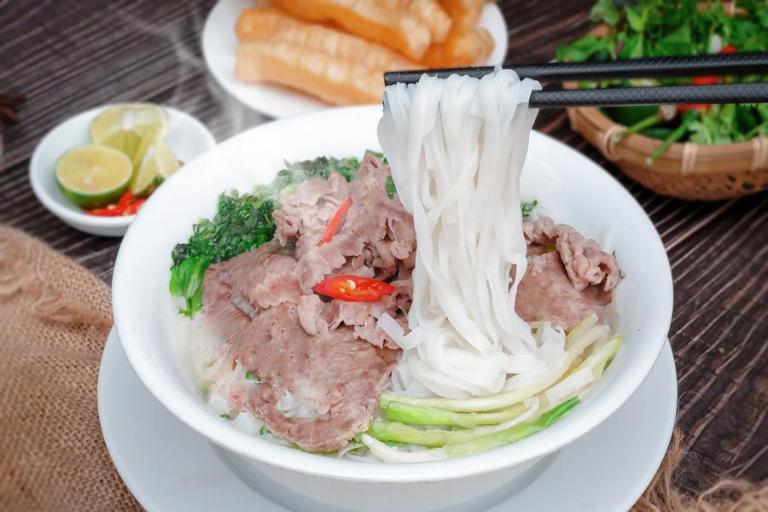
How Pho is Made
Making Vietnamese noodle soup is a gastronomic art requiring patience, accuracy, and a great awareness of flavors, not only a recipe. The broth, the noodles, and the well chosen toppings define a really great bowl of pho.
Preparing the Broth
Pho’s broth is its soul and heart, and cooking it can take hours, even days of work. The important stages are broken out here:
- Choosing the Right Bones: Usually beef or chicken, the basis of the broth is the bones. The flavor of the broth would be much influenced by the quality of the bones.
- Roasting the Bones: Roasting the bones in a hot oven caramelizes the sugars and gives the broth complexity of taste.
- Simmering: Roasted bones are then cooked in water for several hours—often overnight. This lets the flavors draw out from the bones to produce a rich, aromatic broth.
- Adding Spices: To improve the flavor profile of the soup, a range of spices and herbs—star anise, cinnamon, cardamom, cloves, ginger, and onion—are added.
- Skimming and Clarifying: The broth is routinely skimmed to eliminate any contaminants, and it may also be clarified to give it a glistening clean look.
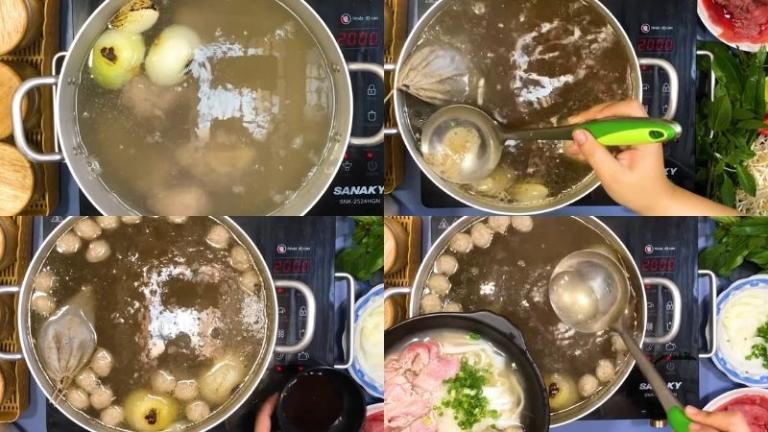
>>> Let’s see more: Exploring the World of Spring Rolls in Ha Noi: A Flavorful Journey
Cooking the Noodles
Usually delicate and thin, the noodles used in Vietnamese noodle soup are rice noodles. They are not mushy but rather boiled in boiling water till soft. The time is critical since overcooked noodles can destroy the pho’s texture.
Assembling the Pho Bowl
The pho bowl is built once the liquid and noodles are ready. The bowl is filled with the heated noodles, then the intended protein—beef, chicken, or tofu—then the broth is poured over top. Lime wedges, bean sprouts, and chili peppers complement the fresh herbs—basilium, cilantro, and mint—that are next sprinkled over the bowl.
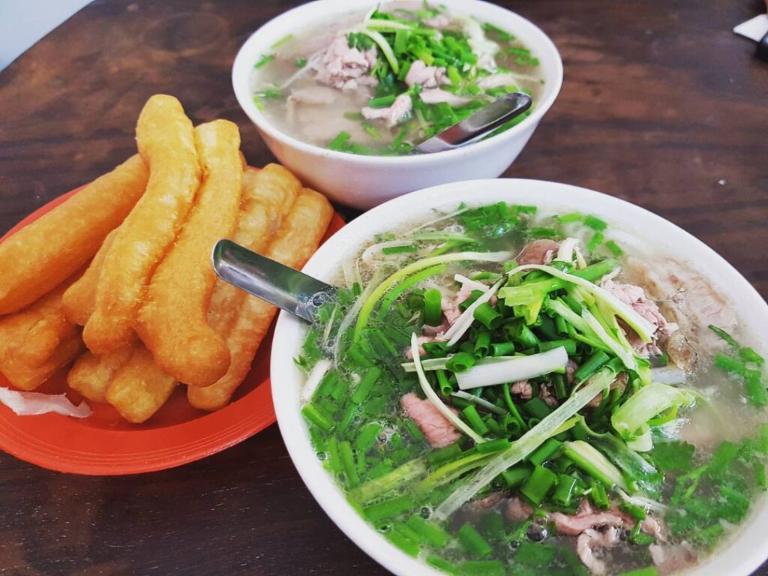
The Importance of Fresh Herbs
The flavor of pho is much improved by fresh herbs. Their vivid, aromatic scent balances the thick broth and soft meat. Herbs are a matter of taste; each diner can arrange their bowl anyway they choose.
The Art of Balancing Flavors
A really good bowl of pho depends on reaching the ideal harmony of tastes. The noodles should be soft but not mushy; the broth should be tasty but not overbearing; and the toppings should accentuate the other components without taking front stage in the meal.
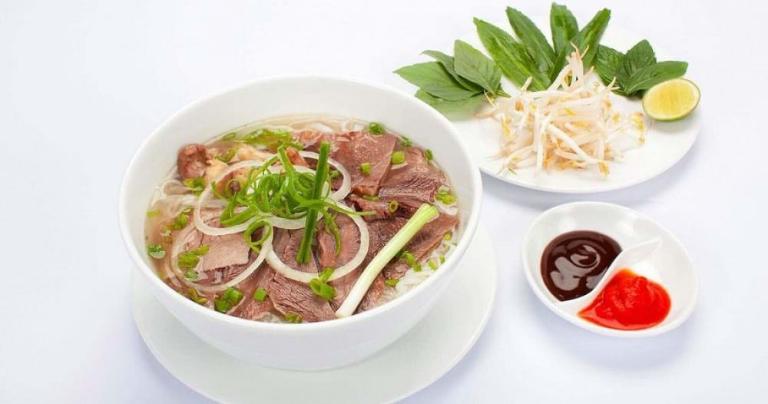
Pho Pairings and Side Dishes
Complementary Sides and Sauces
A flexible meal, pho goes nicely with many sides and sauces. Along with bean sprouts, lime wedges, and sliced chili peppers, common accompaniments are fresh herbs including basil, cilantro, and mint. Popular condiments are hoisin sauce and sriracha, which provide further levels of taste and heat to your Vietnamese noodle soup.
Best Drinks to Enjoy with Pho
Match your Vietnamese noodle soup with classic Vietnamese drinks including fresh lime soda or iced tea. A little beer or a glass of white wine can accentuate the rich tastes of Pho if you like something bolder. These drinks improve the whole dining experience and balance the savory components of the cuisine.
Variations and Customizations
Experiment with several components and toppings to let your Pho become creatively unique. Try substituting chicken or tofu for the beef or even adding more veggies, such mushrooms or bok choy. Vietnamese nood soup is beautiful in that it is flexible enough to let you customize every bowl to your own taste.

Regional Variations of Pho
Pho Hanoi (Northern Style)
Pho is one of must-try dishes in Hanoi. Usually presented with fresh herbs and vegetables, it is defined by a clear, pure broth with little spices. It’s all about simplicity and letting the foods’ inherent tastes take front stage.
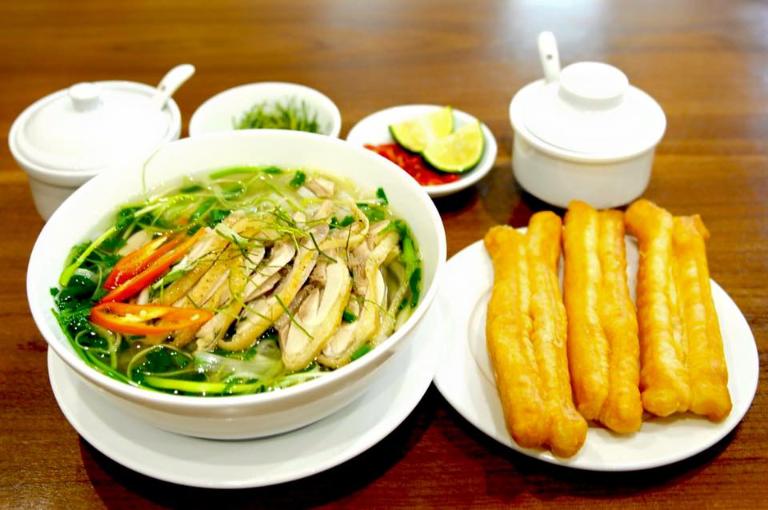
Pho Hue (Central Style)
From central Vietnam, Pho Hue is renowned for its more sophisticated and spicier taste sensation. This variety has a unique kick that distinguishes it from the Northern style thanks in large part to other elements like fermented shrimp paste and jalapeño peppers.

Pho Sai Gon (Southern Style)
Usually sweeter than its Northern cousin, pho sa gon boasts a thicker broth. Often presented with fresh herbs, bean sprouts, and lime, it lets you create a more unique and delicious meal.
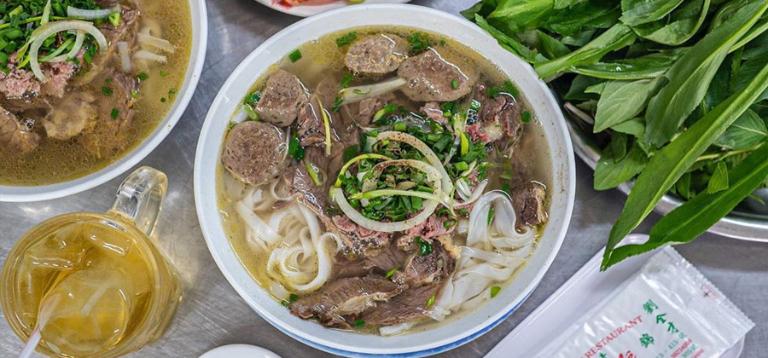
Pho in Vietnamese Culture
Pho as a Breakfast Staple
Pho is usually eaten for breakfast in Vietnam. Starting the day this way is consoling and offers a filling, healthy lunch to last the morning. For many Vietnamese people, this Vietnamese noodle soup is a morning ritual whether they are seated at a neighborhood restaurant or picking a quick bowl from a street seller.
Pho and Family Gatherings
One more meal that brings people together is pho. Families and friends often congregate around a warm bowl of Pho to tell stories and savor each other’s companionship. Pho’s communal element gives it a symbolic meaning of celebration and camaraderie.
Pho and Festive Occasions
Pho steals front stage in many Vietnamese homes during holidays and special events. It’s a major component of holidays and festivals since it’s usually made in big amounts to serve visitors and extended family.
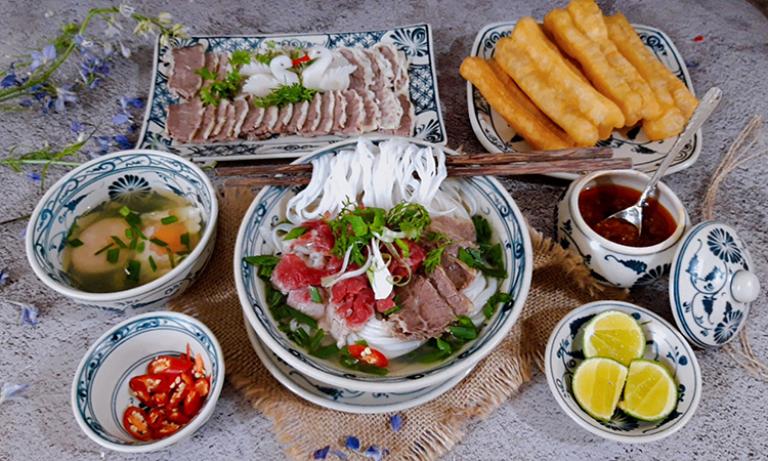
>>> Let’s see more: Explore the Best Hanoi Bread | A Guide to Vietnam’s Iconic Sandwich
How to Make Vietnamese noodle soup at Home
Essential Kitchen Tools
You will need some basic utensils to make Pho at home: a sharp knife for cutting the meat, a big pot for simmering the soup, and a strainer for cleaning the broth of contaminants. Having these utensils will help to simplify and increase enjoyment of the cooking process.
Step-by-Step Pho Recipe
Use a thorough recipe to make Pho in your kitchen exactly as intended. Prepare the broth first; then, prepare the noodles and then put together the soup with your preferred toppings. Remember to taste the seasoning and play about with several herbs and spices.
Tips for Authentic Flavor
Use premium ingredients and slow down the cooking procedure if you want a real Pho taste. To get a strong, rich taste, let the soup simmer for many hours. Use fresh herbs and a bit of lime to also balance the tastes.

Pho is a rich tapestry of flavors, history, and culture not just a bowl of noodle soup. From its modest Vietnamese origins to its worldwide appeal, it is a gastronomic legacy that never fails to enthrall and satisfy. This Vietnamese noodle soup presents a great and real flavor of Vietnamese food whether you’re making it at home or dining at a neighborhood restaurant.
Related posts:






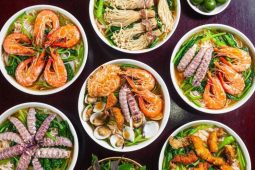

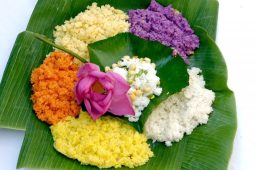
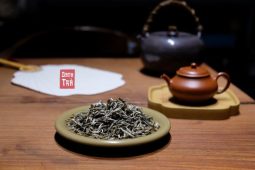
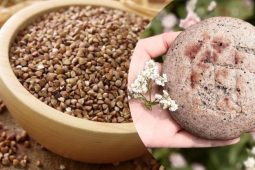
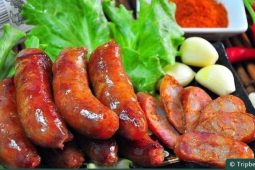
Be the first to comment!